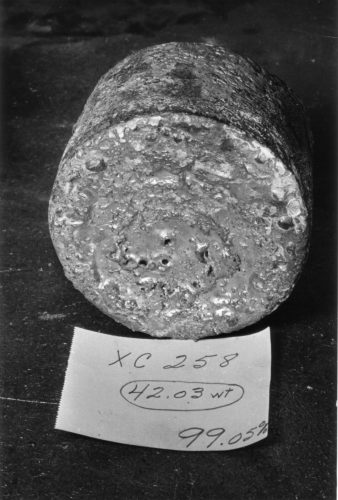In chemical processes, catalysts are compounds that increase the rate while undergoing a cycle of structural changes. At the end of the reaction, the catalyst reforms as it had presented originally. Some of the most common catalytic reactions in organometallic chemistry involve complexes of transition metals and alkenes, which are organic compounds containing a double bond. A team of scientists at the University of Sussex led by Professor Geoff Cloke recently discovered an alkene complex of the actinide element uranium, specifically a uranium–pentalene complex, that catalyzes the hydrogenation (saturation of the double bond with H2) of ethene (C2H4) to ethane (C2H6). In the reaction of this uranium (III) complex with ethene, the researchers observed the formation of an intermediate ethene-bridged diuranium complex. In this complex, ethene bonds as a ligand to two uranium centers, and the oxidation state of uranium formally increases from +3 to +4. The scientists were prompted to investigate this phenomenon further after noting that the intermediate complex reacted readily with hydrogen gas to produce ethane; various characteristics of ethene and uranium required the performance of extra validation throughout their research.
“Uranium in the oxidation state +3 is known to be strongly reducing for polar molecules such as carbon monoxide,” said Richard Layfield, one of the researchers in the study. This means that uranium in this form tends to give electrons to other molecules. However, he explained that, due to ethene’s low polarity, the researchers assumed that it would be a poor acceptor of these electrons. To show that the uranium complex did indeed fully convert ethene to ethane, they performed additional experimental and computational characterization procedures to validate the formation of ethane. Natural bond orbital analysis, which looks at bonding orbitals with the greatest electron density, confirmed the formal double reduction of ethene, showing that the uranium-carbon bonding orbitals were strongly polarized towards the carbon. Thus, the uranium (III) was sufficient to lengthen the carbon-carbon bond. Specifically, the researchers were able to determine that the C–C bonds of the ligand had lengthened from 1.332 Ångstroms, consistent with a double bond, to 1.497 Ångstroms, consistent with a single bond. That is, it seemed as if the alkene had been transformed into an alkane.
Dr. Nikos Tsoureas at Sussex first viewed the formation of the intermediate uranium complex through Nuclear Magnetic Resonance (NMR) spectroscopy, which analyzes the components of mixtures and provides information on their chemical environments. It does so by applying an external magnetic field and a radiofrequency pulse, which excites proton nuclei and measures the subsequent emission; these various recorded emissions yield a spectrum for analysis. They observed features reminiscent of a closely related dinitrogen-bridged uranium complex, and from there predicted the presence of this complex. After confirming the molecular structure of the complex, the researchers ensured with solution NMR that the solid-state structure did not change in solution. “When you have a picture of the molecule from an X-ray diffraction measurement, it is easy to be tempted into thinking that the molecules look the same when you dissolve them in solvent,” Layfield said. “Our chemical reactivity takes place in solution, so if you make a reactivity prediction in solution based on a solid-state structure you should gather evidence that the structure is not significantly different in the two different environments.”
After a comprehensive analysis, the scientists were able to confirm that the ethene-bridged diuranium complex is a suitable catalyst for the formation of ethane from ethene. Their research represents the first use of a uranium catalyst for alkene–alkane transformation. The conversion of alkenes into alkanes potentially allows for the ability to upgrade simple molecules into valuable petrochemicals used as energy sources; for instance, ethene specifically is often used in the making of plastics. Also, depleted uranium is generally a feared element, stored in expensive facilities, and only used for military or aircraft purposes. According to Layfield, however, their discovery may allow for its application in synthetic chemistry, slightly opening the door for the scaling-up of uranium based-catalysts.

